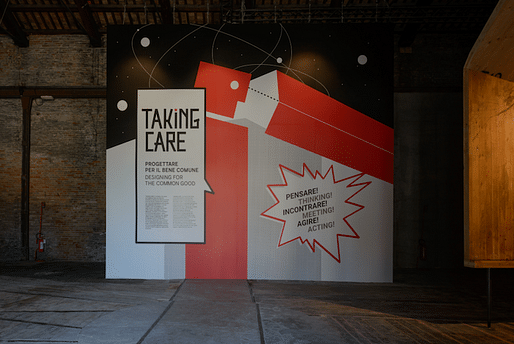

In the glorious luxury of Venice, without discomfort or guilt, you are “slumming it,” setting the world to rights. What you miss, mostly, is art’s perversity, its eccentricity, even its sense for evil. Culture condemned to being morally elevating is culture with feet of clay. — art agenda
I must admit that I avoided the Biennale and its reportings as they have served to the conformity of the buzzwords and romancing with the rather superficial "care."
Nick Currie for art agenda tears into the Venice Architecture Biennale vis a vis its older cousin, the art biennale.
"What kind of art biennale does an architecture biennale make? There’s quite a bit of overlap, given that in Venice both take place in the same buildings—with collateral palazzi and the pungent odor of the lagoon as backdrop—and tend to have curators interested in “the state of things,” using the high moral tone of redemptive humanism. An architecture biennale looks like a drier, more didactic art biennale, with a strong sense of design, a relational aesthetics feel, the odd nod to Brutalism (an Arsenale display on Chandigarh, the gorgeous Baltic Pavilion in its 1970s gymnasium), post-colonial takes on modernism, a fascination with mud and straw. You lie back on scatter cushions to watch a presentation by Assemble about children’s playgrounds. You “learn from outsiders.” In the glorious luxury of Venice, without discomfort or guilt, you are “slumming it,” setting the world to rights. What you miss, mostly, is art’s perversity, its eccentricity, even its sense for evil. Culture condemned to being morally elevating is culture with feet of clay.
The poster for “Reporting from the Front”—bizarrely in the context of the biennale’s title—is an image of an eccentric white lady up a ladder in the middle of a desert. It’s a Bruce Chatwin photograph of the German archeologist Maria Reiche studying the mysterious figures—best seen from the air—of Peru’s ancient Nazca culture. The text tells us that Reiche couldn’t afford to fly over the designs, so she carried a humble aluminum ladder out over the high arid plains. “Standing on the ground, the stones did not make any sense; they were just random gravel. But from the height of the ladder those stones became a bird, a jaguar, a tree, or a flower.
The trouble is that, from the height of this biennale’s curatorial ladder, a great many interesting and mysterious things turn out to be, apparently, nothing more than progressive-sounding, advert-ready buzzwords: sustainability, accessibility, flexibility. The most absurd declension of this blithe mantra appears in the Australian Pavilion, which spins a swimming pool (“The Pool”) as a symbol of everything good: cultural identity, public space, public debate, battles for democracy, achievement, and struggle.
The late Louise Bourgeois might have preferred to think of a pool in the context of disturbing sea monsters, the fear of drowning, wet dreams. But here, in the cheerfully mitigating world of the redemptive biennial, there’s no place for anything like that. We must “learn from the other” without looking into ourselves."
No Comments
Block this user
Are you sure you want to block this user and hide all related comments throughout the site?
Archinect
This is your first comment on Archinect. Your comment will be visible once approved.